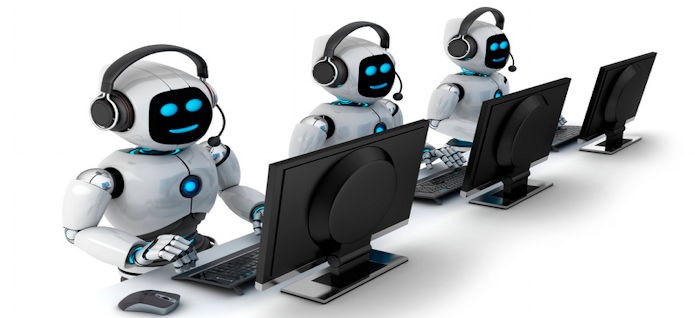Robots and people who work together: it may sound like a science fiction film. But Robotic Process Automation (RPA) is certainly not an extraterrestrial fiction. More and more organizations discover the added value of software robots.
Robotic process automation (RPA) can take labor-intensive processes off your hands. You configure the software robot once, after which it can endlessly copy the same actions. Some companies are skeptical about this robot software, others are enthusiastic. Is RPA a lasting innovation and do people lose their jobs through this software? I identify 5 trends in robotisation.
- From local to central management
It goes without saying that most organizations started with the use of one or only a few software robots. This robot software is often managed from a desktop in that initial phase. Logical. But how do you deal with 80 robots? You can’t manage that separately. That is why more and more organizations set up a central server on which they manage all robots. This way you can see exactly which robots there are, what their status is and how often they are deployed.
“Many organizations set up a central server for robot management”
- RPA and people become colleagues
Sometimes organizations are skeptical about the benefits of RPA in the beginning. But once they see that robot software really can operate multiple systems, they can’t wait to automate as much as possible. Yet not all processes are suitable for RPA and people remain indispensable. I increasingly see that robots support their human colleagues.
- Cognitive automation complements RPA
A software robot can’t deviate from the task that you have assigned him. If there is a problem, he stops or sends an e-mail. You set everything up yourself beforehand. That is safe: the risk of error is minimal. You control yourself and receive a notification if something goes wrong. So the robot does not do anything you do not want, but: it does not do anything anymore. Now that RPA is embedded, many companies are looking for a ‘next step’. Cognitive automation (such as Artificial Intelligence, Natural Language Processing or Machine Learning) seems to be an ideal addition. These technologies have a self-learning algorithm and mimic the reasoning ability of people. They learn, ‘think’ and decide on the basis of previously acquired information and experiences. That offers enormous opportunities, but I also like to make a comment. This cognitive automation is often very error prone. After all, the algorithm makes its own decisions without informing you. Then it may be that the robot once takes a different path than you approach specifically intended. Therefore, you should clearly identify which process you want to automate, so that you know exactly which technology fits. And keep an eye on the results in the interim.
“Thanks to robotisation, there are 58 million more jobs in 2022”
- RPA becomes more accessible
In the past five years, it became increasingly cheaper to implement software robots. As a result, RPA has also become accessible to smaller organizations. If you use this software in combination with cloud services, you do not have to set up your own data center. This saves maintenance and management costs. RPA is also a solution for accountants, civil-law notaries or transporters, because the software can process enormous amounts of information in a short time.
- Robots provide more jobs
A question that engages many employees: will the software robots shorten our jobs? On the contrary! The World Economic Forum calculated that there will be 58 million more jobs in 2022 thanks to robotization than at present. Because organizations are using increasing numbers of robots, suppliers also have to create, configure and maintain more robots. And people are still needed for that.
Advice: start small
RPA is an efficient tool that is increasingly deploying companies. But how do you implement software robots in your business processes? My advice is: start small. You do not have to automate a complex process immediately. Start with a simple process, analyze how that goes and build up your robotization plan step by step.

